Buying a car in Colombia
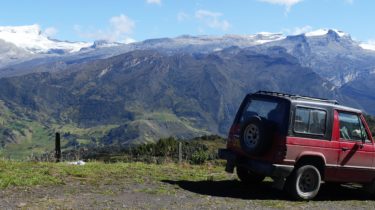
If you spend much time in Colombia you’ll want a car. Here’s how to get one (and which one to get).
UPDATED AUGUST 2023
See my related posts:
– On the Road – road trips to enjoy Colombia.
– A field guide to Colombia’s Classic 4x4s
– Make Driving Fun in Bogotá.
– The Untouchables

Your yearning for your own wheels usually happens just after in internal flight between cities on a clear day looking down on the rugged ridges and small towns sparkling on the vast rumpled landscape below. Then you spot a village in a seemingly impossible location, like wedged on an Andean bluff with no discernible access, and you get thinking: how did that get there? And then: how can I get there? The answer, of course, is very slowly and with some difficulty. Colombia has mountain terrain, some crazy roads, and both natural and man-made risks that conspire to make every road trip an adventure.
Some general advice for running a car in Colombia:
- Don’t drive too much in cities. It’s congested and slow. Best to shop locally and use bicycles, taxis, Ubers or the bus (Transmi in Bogotá). Choose to live in an area of the city where services are close by (ie in Bogotá, Teusaquillo or Chapinero).
- Never rush. Plan road trips with plenty of spare time and enjoy the journey. Colombia has 8,500 road deaths/year, or 83 per 100,000 cars; a pretty high hit rate. You’ll understand why when you start driving the mountain roads here…
- If leaving the city, ensure you have the legally-required Kit de Carretera (more details below). For backroad trips I also carry some basic tools, water, rope, a folding shovel.
- Remember the Pico y Placa restrictions in big cities, each have their own systems, and can restrict cars at certain days and times relating to the last letter of their numberplate (placa).
- You will need a Colombian driving licence, eventually. It sounds complicated, but can be done.
- Buy an old cheap 4×4 ‘campero’ and have a good budget for yearly maintenance.
- Most cars here are stick shift, so it pays to know how to drive one.
Are old cars cheap in Colombia?
The short answer is ‘no’; high import duties on new cars means that second-hand cars are pricey compared to other countries. An old 4×4 like mine (1989 model) will cost at least US$5,000, depending on condition, and a smaller car like a Renault Twingo (2009) around the same. The good news is your car could hold its value; correcting for inflation, my car is worth as much today (US$5,000) as I paid for it in 2013, even after considerable wear and tear.
How much does it cost to run a small 4×4?
Here is a breakdown of my costs to run an old small 4×4 car for a year, based on 10,000kms in my 1989 Mitsubishi Montero 4×4. A small car will cost a lot less.

This is US$2,385 a year, or about US$0.23/km. Road tolls and fuel depend on the usage, and make up more than 50% of the costs. A smaller car would be cheaper in nearly all categories, and a newer 4×4 cheaper for fuel. Another cost not included here is parking, which in cities like Bogota can be hard to find. If you don’t have parking where you live you can probably hire a secure space in a building nearby, check with the neighbours and budget another US$60 a month.
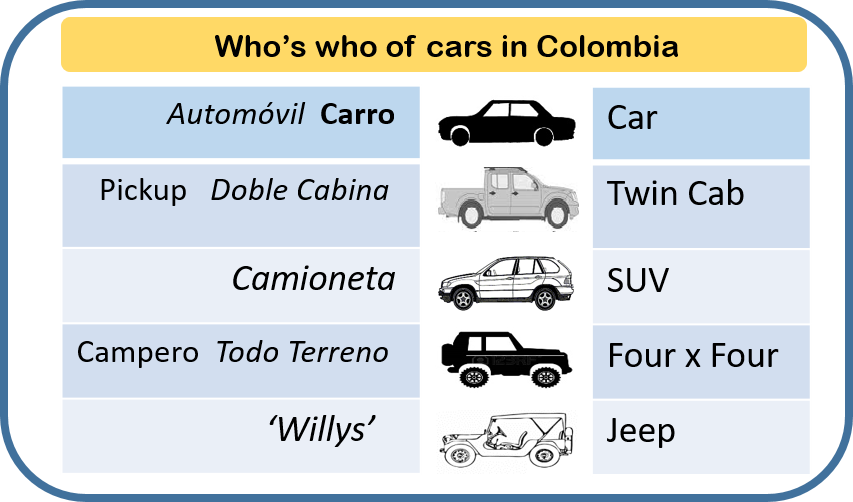
Common names for Colombian car types:
- Carro or automovil: family saloon car, 2WD.
- Camioneta: SUV-type car, usually 4WD, ie Toyota Prado or Kia Sportage.
- Campero: more rugged jeep-type 4×4. Often originated as an open vehicle but could have a cabin added and back seats fitted, often by a company called Fivres. These are now called ‘camperos cabinados’.
- Pick-up: can be single cab (ie Ford F150) or doble cabina (ie Hilux twin cab).
Which car to buy?

A small 4×4 (´campero‘ or ‘camioneta‘) is essential for anywhere interesting in Colombia, but slower on the main roads. Buy a popular model easy to repair and find spare parts. Check out my page on Colombian classic 4x4s.
Most cars are advertised online on www.tucarro.com and www.carroya.com. But if you are not sure what kind of car you want, it pays to visit the car fairs that take place in most cities on the weekends. These are huge lots where people selling cars pay a fee to park up and show their cars, and buyers can browse for free.
In Bogotá this happens on Sundays in a barrio called Alamos, on Calle 63 with Transveral 93. You can walk there or get a taxi from the El Dorado transmilenio terminal. Do NOT buy the car at the fair! If you like a type of car, get contact details of the owner, but also shop around online for a similar but better deal.
Alternatively, if in Bogotá, stroll around Barrio 7 de Agosto where there are thousands of mechanics and spare parts outlets, you’ll find specialist workshops that just specialise in one type of 4×4, and they give plenty of advice, and sometimes sell on cars for owners.
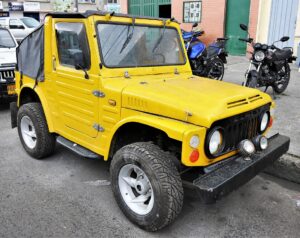
Cheapest and most common small 4x4s are Samurais (Chevrolet or Suzukis), the 1980/90s 4-cylinder Mitsubishi Monteros, or Daihatsus. The Samurais and Daihatsus are smaller and use less fuel (1600cc) but not really big enough for a long road trip with more than 2 people. Monteros are larger and more powerful (2555cc) but costly for gasoline.
Suzuki LJ80s are cute pocket 4x4s, used a lot here for off-road competions. The modern version is the tough Jimny. Less common, but worth considering are older Kia Sportages, Honda CRVs etc.
Larger old 4x4s include Toyota Landcruisers, Nissan Patrols, Willys jeeps etc but even 25-year-old models are usually expensive to buy and costly to run.
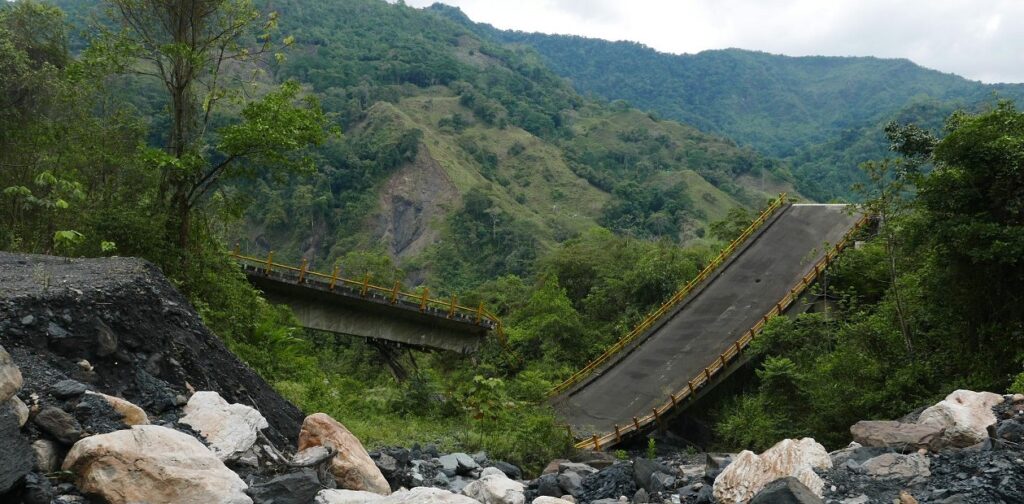
For a real tight budget I would recommend a 1980s Mazda 323 or Renault 4, not 4x4s but both very common cars actually produced in Colombia in past decades, and both are front-wheel drive they perform well on dirt roads. The Mazda is a bit faster and more stable on tarmac roads, but the Renault has more ground clearance for off road. Later Renault models (Twingo, Logan) are also very common and easy for fixing (which they will need frequently).
Like anywhere in the world the criteria for choosing the car to purchase are:
- Fewest owners (ask for recent Certificado de Tradicion of car, which shows owner history).
- Low kms (can be faked, so also check log book and mechanic history). Avoid anything with more than 200,000kms and preferably under 150,000kms.
- During the test drive take it up a steep hill. This is the simplest way to assess the engine power. Going back down will assess the brakes.
You could find an independent mechanic to do a revision of the car, this costs around US$25, but may not be 100% reliable.
How to buy a car
1. Negotiate the price: compare the price on on-line sites www.tucarro.com and www.carroya.com, then offer 30% less than the asking price, then wait. Best to have several offers with different buyers and see which one comes back. You’ll probably settle at 20% under the advertised price. Use WhatsApp to negotiate (you can then translate if needed!)
2. Buy directly from the owner: Colombia is full of scams and there are many stolen cars falsey flogged to unsuspecting customers. But there are ways to avoid this, and checks you can do yourself. The first rule is buy directly from the owner. Quite often Colombians pass cars around in the family, and you might be dealing with the brother/son/uncle/nephew or ‘friend’ of the owner. They might show some paperwork to ‘prove’ they can sell the car on the owner’s behalf. THIS IS A RED FLAG. Insist on dealing directly with the owner, meet them in person, check their CEDULA (ID) card.
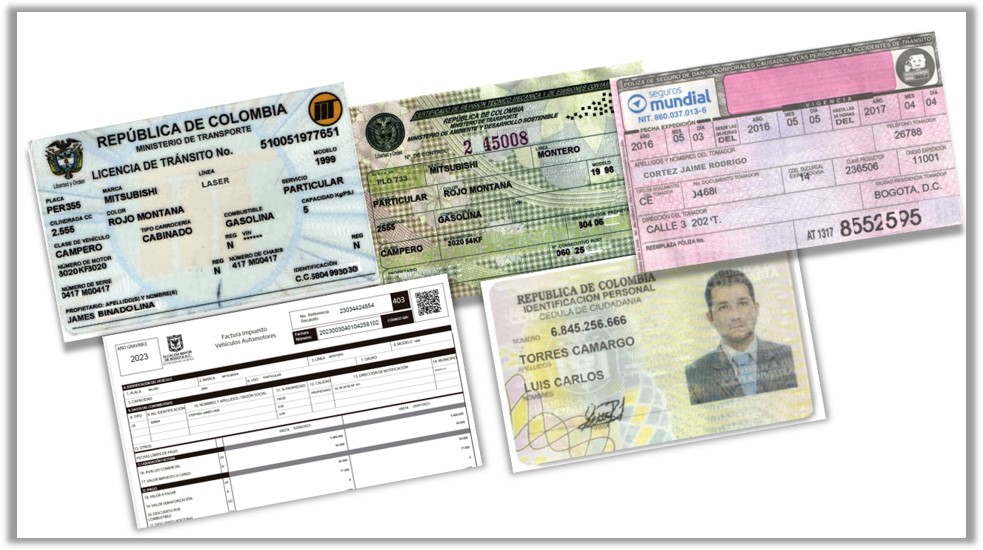
3. Once you are with the legal owner, check the current paperwork, shown below, these are Colombian drivers must have these papers: Technical Revision certificate (Revision Tecnica), the car’s Licence Card, (Licencia de Tránsito), the owner’s ID Card, (Cedula de Ciudania) obligatory SOAT 3rd party insurance. The SOAT and Technical Revision might exist on-line, ask for a print-out. Also make sure the car taxes are paid to date, owner should have receipts or a certificate.
4. Search the RUNT (Registro Unico Nacional de Transito) database on-line free to check the ownership. Click consulta por vehiculos por placa and fill in the details as below.

When you click ‘consultar informacion‘ then the following page MUST appear and cross check with the Car’s ID card, and with the CAR ITSELF (physically check the engine number,chassis number, and serial number).

If any this information does not match, DO NOT BUY.
5. Further ownership check; Certificado de Tradicion. The owner should give you a Certificado de Tradicion of the car, issued within the last 30 days. This shows the ownership history, the characteristics of the vehicle, any legal limitations (ie an embargo) from the date of issuance of the initial registration. The last name on the ownership history should be the current seller. For extra security you can purchase your own copy (US$10) on-line from the ‘Ventanilla Movilidad’ and in some areas purchase it from the local tranist office (these vary from city to city, but Google ‘Certificado de Tradicion Vehiculo‘ for your city or town).
6. No outstanding fines on the car. The owner cannot legally sell the car if if has fines pending, for driving infractions. You can check this yourself for free at the SIMIT website with the car numberplate (placa).
7 SOAT is in date: the Seguro Obligatorio de Accidentes de Tránsito is an obligatory insurance to cover any third parties for medical costs (ie if you run someone over), it is usually renewed annually, and is easy to buy (you can get on-line or even in large petrol stations). Can cost up to US$250 per year. Check the expiry date on the current SOAT certificate, should be active for the sale to go ahead.
8 Revision Tecnica is in date: this is the annual mechanical check for older vehicles, again should be in date for the sale to go ahead. The certificate should prove basic mechanical safety of the car (brakes etc), but the RT sites are often bribed to pass the test, so don’t rely on it as proof the car is safe….
9 Local taxes are paid: the Impuesto Vehiculo Automotores is paid yearly, usually around March, and the owner should have receipts to prove this tax was paid, or a certificate proving this. Technically the vehicle ownership cannot be transfered if these taxes are unpaid over the lifetime of the car.
The sales contract
Once the price is fixed, and the paperwork checks out, then sign a sales contract (promesa de compraventa) with the owner on the notary office (every large town has one). This comes in a standard format and the deposit, final price, division of ownership transfer costs, the date of the transfer, handover of car, and final payment.
Negotiate the terms similar to below:
- Deposit between 10% and 20% of final cost. Deposit is paid (usually in cash) when promesa is signed at the notary office. Transfer costs half each, but sales tax 100% paid by seller
- To pay the balance only on physical handover of car. This means the transfer papers need to be submitted and accepted by the Transit Office with the final vehicle Licencia de Transito in your name. Insist on this.
- Date of the sale close: if you have the funds to hand, and the car is ready to handover and all paperwork in order, then you can quickly finalise the deal depending on the time the transit office takes to process the papers. In Bogota can take up to 2 working days.
Other costs will be:
- Sales tax. This is always paid by the seller.
- Costs for transfer of car ownership. Usually divided 50% seller and 50% buyer. Allow around US$20 for your share.

How to register yourself in the RUNT
Before you can legally own a car in Colombia, or get a Colombian driving licence, you need to register yourself in the RUNT. This varies from city to city, but usually you need to go in person to the local transit office with your ID (Cedula Extranjeria, CE, or passport). To find out for your local area, Google ‘¿Cómo inscribirse en el RUNT?‘ and your locality.
In Bogotá you need to make an online appointment for the transit offices known as VUS (Ventanillas Unicas de Servicios) found all over the city then make an appointment after creating your own account.
Usually there are appointments for the following day. Take your ID with you to the appointment and pay the fee (US$5).
Purchasing a car with a passport or CE?.
In 2023, foreigners could register in the RUNT with their passports, which means they can also buy a car with their passport as their ID. But since any long-term stayers (more than 90 day) are usually required to obtain a Cedula de Extranjeria (CE), my advice is to get your CE first and register with this. The exception would be if you in Colombia for a short time and are buying a car there with the intention of travelling out of the country to Ecuador and beyond; then use your passport.
Sealing the Deal
So far it all seems very complicated, and if you made it this far you have got your Gold Medal in Colombian tramitologia! the last part is the visit to the Transit Office (ie VUR in Bogotá) to finalize the deal. Normally the owner/seller would prepare all this and invite you to the time and place. At this point, you should
– receive the new plasticated car ID Card, the Licencia de Transito, in your name.
– recieve an updated Certificado de Tradicion y Libertad with your name on the certificate.
– physically receive the car in the same condition you agreed to buy.
– pay the outstanding balance on the car to the owner.
– pay and of the transfer fees as agreed in the Sales Contract.
The Driving Licence
- Tourists or people transiting Colombia can use their foreign driving licence, which they must present if asked (ie at police checkponts) with their original passport.
- Anyone with a Cedula de Extranjeria (CE, or foreign resident ID card) or spending more than 6 months in the country requires a Colombian licence or pase de conduccion.
- International Driving Licences are not valid in Colombia.
- Citizens of Spain, Peru, Chile and South Korea (!?) can have their foreign licences ‘validated’ for Colombia.
- All other nationalities must do the ‘full process’ to get a ‘first time Colombian licence’.
- Usually police are not too fussy, so allow you to use your foreign licence for years. However, if you have any legal problems (ie car accident) then not having the proper Colombian licence will cause problems.
In short, anyone buying a car to drive in Colombia should get a Colombian driving licence. The process looks complicated on paper, but can be done.
Driving schools to the rescue!
‘But I already know how to drive! Why would I need to find a driving school?!,‘ I hear you say…Unfortunately, for your Colombian licence you need to go through a driving school. Luckily there is one in every town. The good news is that the CEA (Centro de Enseñanza Automovilística) won’t actually make you take lessons (assuming you can drive) and wil also organize most aspects of getting the licence. You’ll find a CEA usually next door or one block from the local transit office, so go there first, and they will organize everything.
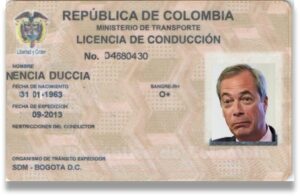
So let’s break it down:
First, you need to be inscribed in the RUNT (Registro Unico Nacional de Transito) see instructions under ‘How to register yourself in the RUNT’ above, since you also need to do this to buy a car. To register, find your local transit office, and these vary in name from place to place. In Bogotá, they are the ‘VUS’ Ventanilla Unica de Servicios. Costs around US$5. The CEA can help you with this.
Medical Test, close by to the Transit Office and CEA will be the CRC (Centro de Reconocimiento de Conductores) where you can book the medical test, eye test, psychological test and ‘coordination’ test, all very simple and done in about 1 hour, at a total cost of US$50.
Driving Test, the CEA (Centro de Enseñanza Automovilística) will do your ‘driving training’ and test, which (if you can already drive) can be ‘negotiated’ that you don’t actually have to do any driving lessons. It is worth to study the theory and pass that test, so you know the Colombian rules of the road (even though no-one else does!). The cost is negotiable, but should be around US$100 to US$200 max. Once you have ‘passed’ the driving test, the CEA will give you the certificate. Don’t worry, no-one in the history of Colombia has ever failed their driving test! (Which explains alot).
Both the CEA and CRC will upload your test results onto the RUNT database, make sure they do, otherwise you cannot get your licence. Once the data is uploaded, get your appointment at the local transit office and they will issue your plastic licence card. The final cost is US$55.
Total cost: the whole licence process costs between US$210 and US$ 300 depending on how cheap you can get your ‘driving test’. Licences must be renewed every 10 years with the medical (CRC) tests, and this costs around US$100.
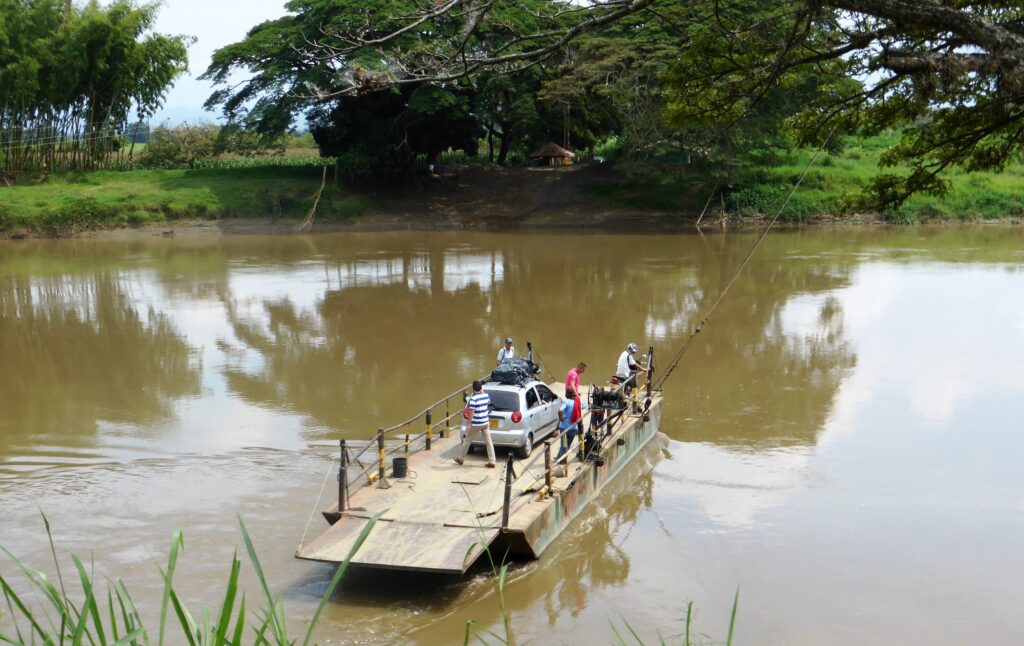
Looking after your car
Mechanical work: Like anywhere, mechanics can never be trusted, the trick is to find the least dishonest. Here’s some tips:
- Find a local workshop close to where you live and build a relationship with the mechanics there. Some minor work can be done in your own parking place.
- if your car is being worked on, pop in unexpectedly to monitor progress and push the mechanics.
- Don’t expect the mechanics to work on your car without you pushing them. You can also ask them to send you photos every day of work done.
- Be flexible with the scope of the work – old cars often turn up unexpected problems – but ensure all ‘additions’ are agreed and costed. Cost work for labor (‘mano de obra’) and spare parts to be fitted (´repuestos´).
- Also agree if spare parts are ‘nacional‘ or ‘japones‘ (which cost more). For important parts I use ´japones´.
- All spare parts will be bought externally, so make sure receipts are presented, also insist to see all old parts that have been replaced. Mechanics usually save these. Where possible make a visual check to see that all the parts have been fitted.
If you follow the above rules, most workshops will respect you, and you can form a reasonably trustworthy relationship. If you are a repeat customer, things generally get cheaper.

Yearly paperwork
OK, so you now own the car. Unfortunately the paperwork continues…here’s the routine
Revision Tecnica: best to get your mechanic to revise the car before the test, and ask the mechanic to atually take your car for the test. Old cars might have trouble passing the gas emissions tests, so your mechanic can tweak the carburettor / injectors as needed.
SOAT: the obligatory insurance needs renewing every 12 months, as mentioned above, you can buy on-line or sometimes at petrol stations etc. This is the first document police will check at any stop.
Extra insurance: SOAT only covers third party medical, ie injury or death of accident victims. You can also purchase more comprehensive insurance on top of the SOAT. I have a third-party damage insurance, which covers any damage I cause to other vehcles, but not my own. This is around US$250 a year. The reason for this is the risk of crashing into an expensive car and being blamed, more likely if you are foreigner with the corrupt legal system and the other owner probably bribing the police even if it was not my fault.
Tax: the yearly Impuesto Vehiculo Automotores is paid around March, the tax is paid locally to the Secretaria Distritial de Hacienda, and the process and website can vary from place to place. Usually you can register on-line and register a bill to pay in the bank, or pay on-line and generate your receipt. The bill also generates a estimate of the vehicle value, avalulo comercial, on which the tax is based; note that the official value is way below the ‘street value’. My car is worth US$1,375 according to the tax bill, and taxed US$40 a year. The actual value is closer to US$5,000.

Rules of the road
Colombian roads have hazards, obstacles, never-ending road works and potholes, so drive defensively. Drivers do some amazingly daft – and annoying – things, but are generally not hyper-aggressive, and there is much less road rage than in other countries. Partly because of the anarchic conditions on city streets, car users tend to help each other out. Be tolerant of buses, taxis and trucks, and any other road users who make a hard living driving in these conditions, and keep an eye out for cyclists and pedestrians. .
Things to be aware of:
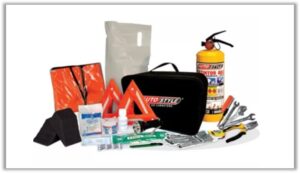
- some lanes are exclusively for motorbikes and buses, and in Bogota there are lanes for buses but not motos
- Pico y Placa rules that restrict hours of car use in peak hours (pico) depending on the last digit of your car number plate (placa). The hours and days vary from city to city, but usually coincide with week-day morning and evening rush hour. This can complicate transiting cities on a longer road trip, and is one (of many) reasons I always plan to cross the cities in the middle of the day. Most cities vary the schedule every 6 months, so best to google ‘pico y placa’ and the name of the city for the latest info. Note: many cities have a yearly dia sin carro (car-free day) which also varies from place to place, and on Sunday and festivos (bank holidays) many cities close main roads for cycling, known as ciclovias. Being a keen cycling nation, some main roads can also be closed for cycle races on weekends, but usually only for a few hours.
- Increased use of cameras at junctions to monitor light-jumping, illegal turns etc. These record your number plate (placa) and generate an automatic fine.
- Frequent radar traps on main roads, usually on a long straight.
- Police road blocks (retens) where your documents will be checked, and maybe your lights.
- Outisde the city, you need the Kit de Carretera, with fire extinguisher etc, you can buy in hardware stores and Homecentre. Police often check this, and fine you if it’s incomplete.
- Unclear and unmanaged parking zones, then sudden swoop by tow trucks that haul your car away to the dreaded patios.
- Fines – if you get caught on the main highways police will make it impossible to pay an official fine (i.e. you have to attend some distant village any Friday on a full moon) to ensure you offer a bribe. City cops are generally OK, but generally will fine you anyway, but it can usually be paid in any bank or even on-line. Fines vary from place to place but generally more than US$30 to US$150 for minor infractions. You can reduce the fine by 50% by visiting the transit office and requesting a ‘Refresher Course’ in driving which takes two hours, but you might need to make an appointment.
- Don’t assume you will be notified of traffic fines by post, so if you want to check your status there is an on-line national website called SIMIT which allows consultas by your cedula number.
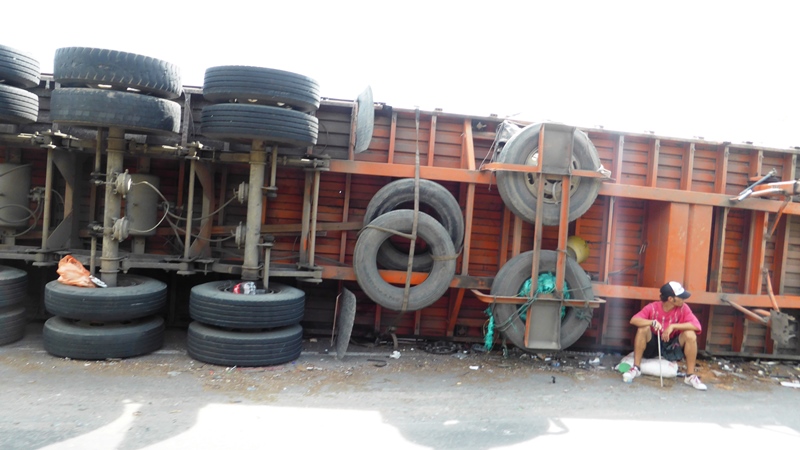

15:24
Thanks for all the info – really super helpful